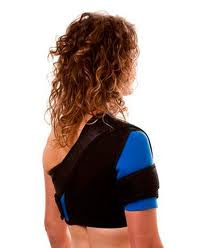Shoulder Braces
Shoulder braces are used for a wide variety of treatments. They can help a patient recover after an operation or an injury and they can also be used to correct deformities that may have occurred. In recent times, stronger and lighter materials have entered the market and that makes shoulder braces quite lightweight with a few technological advancements. In a number of cases, the shoulder braces can be made of a material that allows the skin underneath to breathe and remain cool in summer.
Arm immobilizers
Arm immobilizers are particularly important if you have suffered a broken bone, joint or a fracture. It is important that there is no movement of the bone as the bone fuses and knits together, as that will retard the healing process. For this reason, an arm immobilizer is needed to keep the limb in one position. Often the arm will be protected in cast rather than by a brace, however, with a shoulder problem this is often not practical. For this reason, shoulder braces are used to restrict upper arm movement so as to reduce any further damage to an injured shoulder.
Advantages of pinning
In the recent past, advances in pinning techniques have increased the recovery period of broken bones and facilitated healing of problems caused by injuries to shoulders. In the early stages of recovery, the shoulder will need to be protected by shoulder braces to allow the shoulder bones to begin their recovery process. As the recovery process continues, the shoulder braces can allow some limited protected movement, so that the patient can start to build up his or her strength and gain more mobility.
Shoulder braces for support
Many shoulder braces are used to support injuries or breaks in parts of the arm. Typically, the shoulder brace will contain:
- A comfortable support strap that will be placed over the head
- The right shoulder will support the left arm and vice versa
- The shoulder brace can be removed, for example, for a bath or shower
- The strap will have a comfort pad to stop the danger of chaffing through rubbing
If the injury is in your lower arm below the elbow, the shoulder brace will allow full upper arm movement, as well as flexibility of the elbow. Some shoulder braces of this type are made of a more elastic material that continue to support the lower arm when it is in a lowered position. These braces can also retract as the lower arm is raised. If the injury is in a bone in the lower arm itself, the shoulder brace should allow full wrist and hand movement.
If the injury is to the upper arm or the elbow, it is possible to use the shoulder brace to allow pivotal shoulder movement. However, in many cases, physicians recommend that the upper arm remain in a fixed position. This is advisable because it will allow the arm to mend more rapidly as there is no movement to delay the recovery. In addition, this also reduces the amount of pain to the injured person.

